Clade Monocots Scientific name Ipheion Rank Genus | Clade Angiosperms | |
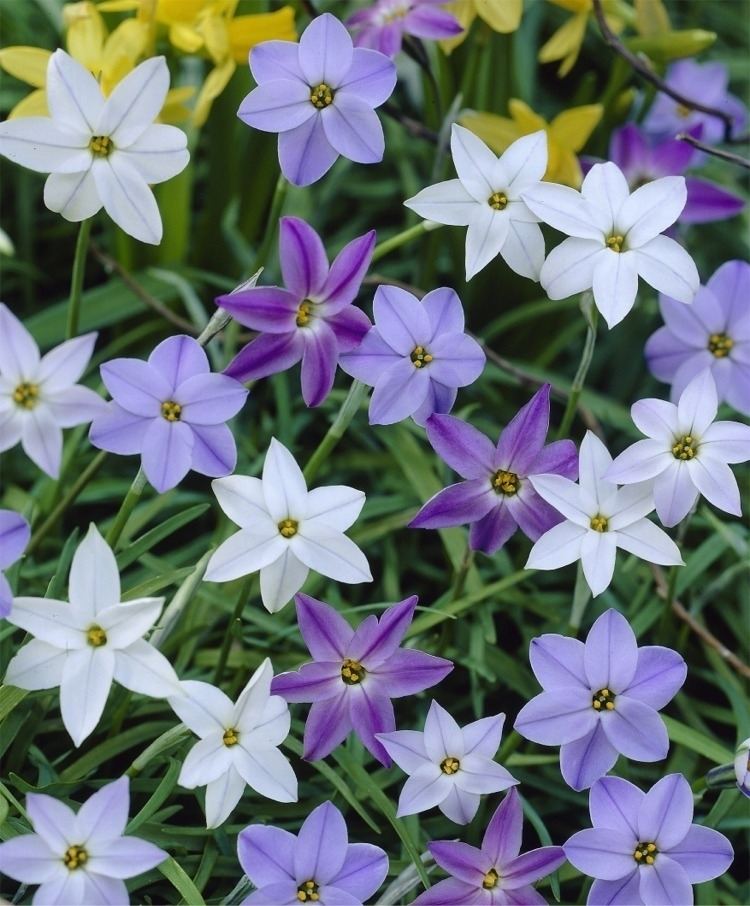 | ||
Similar | ||
Mystery solved ipheion uniflorum spring starflower
The flowering plant genus Ipheion (starflower, spring starflower) belongs to Allioideae subfamily of the Amaryllidaceae family. The World Checklist of Selected Plant Families no longer recognize the genus, regarding it as a synonym of Tristagma, although The Plant List accepts two species.
Contents
- Mystery solved ipheion uniflorum spring starflower
- Ipheion garden plants
- Description
- History
- Familial circumscription
- Phylogenetics
- Species
- Species formerly placed in this genus
- Uses
- References
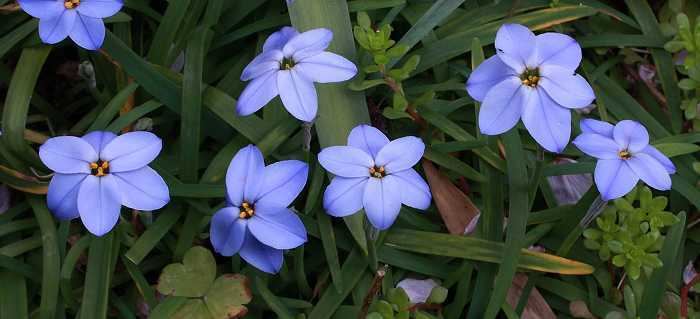
Ipheion garden plants
Description
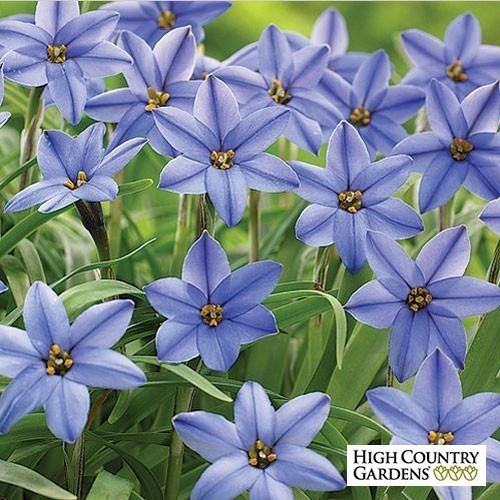
They are small bulbous perennials with narrow grass-like leaves and honey-scented star-shaped flowers in spring, usually in shades of white or pale blue. The genus occurs naturally in Argentina, Uruguay, and southern Brazil, although Ipheion uniflorum has naturalized elsewhere.
History

The genus was originally described in 1836 by Constantine Samuel Rafinesque, based on Ipheion uniflorum, separating it from Milla uniflora Graham (now Tristagma). The original description was unifloral inflorescences with white flowers, spathe formed by one bifid bract, staminal filaments independently fused to the perigonial tube and the fruit being a clavate trilocular capsule.
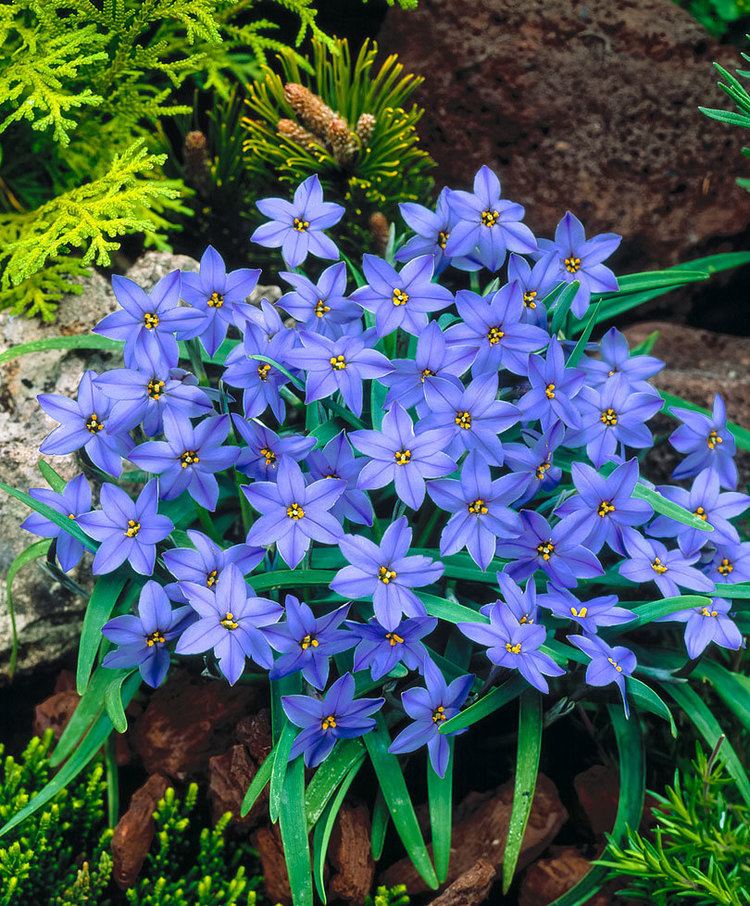
The name then disappeared for more than a century and at various times the species have been included under other related genera (Milla, Tristagma, Brodiaea (including Hookera), Leucocoryne, Nothoscordum, Triteleia and Beauverdia). Several of these genera are now in a completely different but related family (Themidaceae). The closest of these genera to Ipheion is actually Tristagma. For instance in 1837, at the same time as Rafinesque's description, Ipheion uniflorum was described by John Lindley in the Botanical Register as Triteleia uniflora Lindl. (see illustration)

In 1908, Beauverd placed Ipheion uniflorum in a new section of Nothoscordum, Nothoscordum section uniflora Beauv. as Nothoscordum uniflorum Baker (without attributing Rafinesque), along with four other species. However the name Ipheion did not appear again until 1943. In that year Herter elevated Nothoscordum section uniflora to the rank of genus, as Beauverdia. Later that same year Stearn pointed out that the name Ipheion had precedence and described the genus with nine species under that name.

There has been constant uncertainty as to the limits of the genus. At one stage it included 23 species in two sections, at other times it was completely absorbed into other genera such as Tristagma. Those species with yellow flowers were returned to Nothoscordum. In 1972 Guaglianone separated it again from Tristagma and divided it into two sections, Hirtellum and Ipheion. At that time it consisted of eight species in Argentina, Uruguay, southern Brazil and central Chile.
Familial circumscription
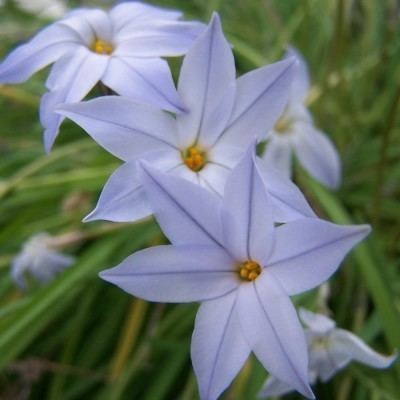
Lindley included Ipheion (as Triteleia) under the Liliaceae family, a pattern that remained until 1926, when Hutchinson moved parts of that family to Amaryllidaceae, as tribe Gilesieae, an arrangement that has largely persisted since.
Phylogenetics
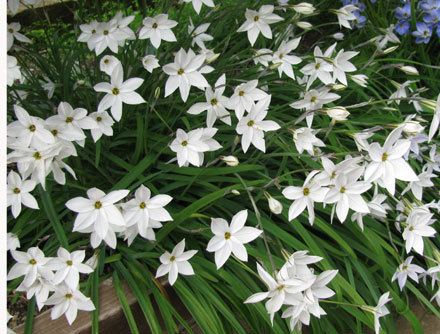
In 1996, a molecular phylogenetic study of the rbcL gene created the Gilliesioideae, as one of three subfamilies within Alliaceae. As phylogenetically constructed, Gilliesioideae (Gilliesioideae (Lindl.) Am., Botany: 134. 1832 - Gilliesieae Lindl. in Bot. Reg.: ad t. 992. 1826.) consisted of those New World Alliaceae not included in the other two subfamilies, which included both the former Gilliesieae together with Ipheion, Leucocoryne, Nothoscordum, and Tristagma. This is the circumscription which the Angiosperm Phylogeny Group (APG) accepted in the APG classification of 1998 and which later became known as Alliaceae sensu stricto (s.s.).
This construction of Gilliesioideae, implicitly recognised that it was composed of two groups or tribes, informally referred to as Ipheieae and Gilliesieae. The Ipheieae were actinomorphic, and included Ipheion, Nothoscordum, Leucocoryne s.l. (including Pabellonia and Stemmatium). Further phylogenetic analysis revealed that Ipheion was not monophyletic but rather biphyletic with some species clustering with Tristagma, and others with Nothoscordum (Fay 2006) although the division into sections was later supported. Research published in 2010 suggests that although related to genera such as Tristagma and Nothoscordum, it is a distinct genus of 3 species. However, other sources do not recognize the genus, placing all the Ipheion species in Tristagma.
Ipheion section Hirtellum was raised to genus rank in 2014 under the older name of Beauverdia, with four species found in Argentina, southern Brazil, and Uruguay. This corresponds to Group 3 of Sassone et al. 2013. This leaves Ipheion section Ipheion representing the genus, but further work is required. This cluster (Group 2 in the cladistic analysis of Sassone et al. 2013) which clusters with Tristagma may either be an independent genus, or a section of the latter genus. These are the three species listed here.
Species
Species formerly placed in this genus
Other species formerly placed in Ipheion have been transferred to Beauverdia, Nothoscordum or Tristagma:
Uses
Ipheion uniflorum is widely used as an ornamental garden plant in the Americas, Africa, Australia and Europe.
